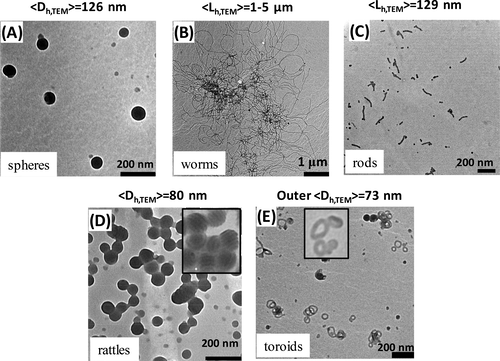当前位置:
X-MOL 学术
›
Biomacromolecules
›
论文详情
Our official English website, www.x-mol.net, welcomes your
feedback! (Note: you will need to create a separate account there.)
Biodistribution of PNIPAM-Coated Nanostructures Synthesized by the TDMT Method.
Biomacromolecules ( IF 5.5 ) Pub Date : 2018-09-07 , DOI: 10.1021/acs.biomac.8b01196 Wenyi Gu 1 , Valentin A Bobrin 1 , Sung-Po R Chen 1 , Zhao Wang 1 , Jennifer P Schoning 1 , Yushu Gu 1 , Weiyu Chen 1 , Mingshui Chen 1, 2, 3 , Zhongfan Jia 1 , Michael J Monteiro 1, 4
Biomacromolecules ( IF 5.5 ) Pub Date : 2018-09-07 , DOI: 10.1021/acs.biomac.8b01196 Wenyi Gu 1 , Valentin A Bobrin 1 , Sung-Po R Chen 1 , Zhao Wang 1 , Jennifer P Schoning 1 , Yushu Gu 1 , Weiyu Chen 1 , Mingshui Chen 1, 2, 3 , Zhongfan Jia 1 , Michael J Monteiro 1, 4
Affiliation

|
Targeting the spleen with nanoparticles could increase the efficacy of vaccines and cancer immunotherapy, and have the potential to treat intracellular infections including leishmaniasis, trypanosome, splenic TB, AIDS, malaria, and hematological disorders. Although, nanoparticle capture in both the liver and spleen has been well documented, there are only a few examples of specific capture in the spleen alone. It is proposed that the larger the nanoparticle size (>400 nm) the greater the specificity and capture within the spleen. Here, we synthesized five nanostructures with different shapes (ranging from spheres, worms, rods, nanorattles, and toroids) and poly( N-isopropylacrylamide), PNIPAM, surface coating using the temperature-directed morphology transformation (TDMT) method. Globular PNIPAM (i.e., water insoluble) surface coatings have been shown to significantly increase cell uptake and enhanced enzyme activity. We incorporated a globular component of PNIPAM on the nanostructure surface and examined the in vivo biodistribution of these nanostructures and accumulation in various tissues and organs in a mouse model. The in vivo biodistribution as a function of time was influenced by the shape and PNIPAM surface composition, in which organ capture and retention was the highest in the spleen. The rods (∼150 nm in length and 15 nm in width) showed the highest capture and retention of greater than 35% to the initial injection amount compared to all other nanostructures. It was found that the rods specifically targeted the cells in the red pulp region of the spleen due to the shape and PNIPAM coating of the rod. This remarkable accumulation and selectively into the spleen represents new nanoparticle design parameters to develop new splenotropic effects for vaccines and other therapeutics.
中文翻译:

通过TDMT方法合成的PNIPAM涂层纳米结构的生物分布。
用纳米颗粒靶向脾脏可以提高疫苗和癌症免疫疗法的功效,并具有治疗包括利什曼病,锥虫,脾结核,艾滋病,疟疾和血液疾病在内的细胞内感染的潜力。尽管在肝脏和脾脏中都可以捕获纳米颗粒,但是仅在脾脏中捕获特异性的例子很少。提出纳米颗粒尺寸越大(> 400 nm),在脾脏中的特异性和捕获性就越大。在这里,我们使用温度定向形态转换(TDMT)方法合成了五种具有不同形状的纳米结构(范围从球形,蠕虫,棒状,纳米级和环形),以及聚(N-异丙基丙烯酰胺),PNIPAM,表面涂层。球状PNIPAM(即,已经显示出水不溶性)表面涂层显着增加细胞摄取并增强酶活性。我们在纳米结构表面上掺入了PNIPAM的球状成分,并在小鼠模型中检查了这些纳米结构的体内生物分布以及在各种组织和器官中的积累。体内生物分布随时间的变化受形状和PNIPAM表面组成的影响,其中器官的捕获和保留在脾脏中最高。与所有其他纳米结构相比,棒(长约150 nm,宽约15 nm)显示出最高的捕获和保留率,大于初始注入量的35%。已经发现,由于杆的形状和PNIPAM涂层,杆特异性地靶向脾的红髓区域中的细胞。
更新日期:2018-08-30
中文翻译:

通过TDMT方法合成的PNIPAM涂层纳米结构的生物分布。
用纳米颗粒靶向脾脏可以提高疫苗和癌症免疫疗法的功效,并具有治疗包括利什曼病,锥虫,脾结核,艾滋病,疟疾和血液疾病在内的细胞内感染的潜力。尽管在肝脏和脾脏中都可以捕获纳米颗粒,但是仅在脾脏中捕获特异性的例子很少。提出纳米颗粒尺寸越大(> 400 nm),在脾脏中的特异性和捕获性就越大。在这里,我们使用温度定向形态转换(TDMT)方法合成了五种具有不同形状的纳米结构(范围从球形,蠕虫,棒状,纳米级和环形),以及聚(N-异丙基丙烯酰胺),PNIPAM,表面涂层。球状PNIPAM(即,已经显示出水不溶性)表面涂层显着增加细胞摄取并增强酶活性。我们在纳米结构表面上掺入了PNIPAM的球状成分,并在小鼠模型中检查了这些纳米结构的体内生物分布以及在各种组织和器官中的积累。体内生物分布随时间的变化受形状和PNIPAM表面组成的影响,其中器官的捕获和保留在脾脏中最高。与所有其他纳米结构相比,棒(长约150 nm,宽约15 nm)显示出最高的捕获和保留率,大于初始注入量的35%。已经发现,由于杆的形状和PNIPAM涂层,杆特异性地靶向脾的红髓区域中的细胞。









































 京公网安备 11010802027423号
京公网安备 11010802027423号